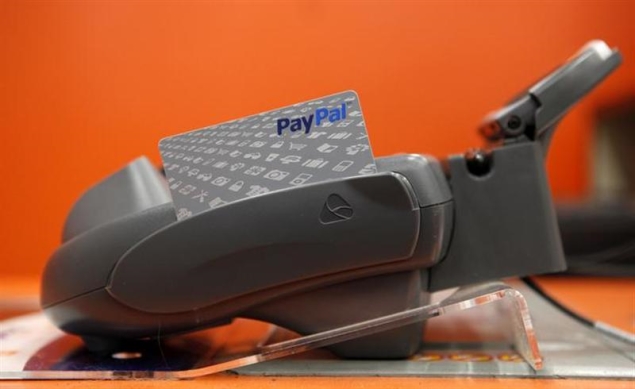- Home
- Internet
- Internet News
- Payment system breaches less common than other Web based attacks: Study
Payment system breaches less common than other Web-based attacks: Study

A report from Verizon found that Internet attacks in which data were compromised resulted more often from various small online acts, such people clicking on malicious Web links and choosing easy-to-guess passwords.
The report, considered to be one of the top annual looks at Internet-related crime, includes information from 50 organizations around the world, ranging from law enforcement to security companies. The report was due out Wednesday.
Target Corp.'s breach, one of the largest in history, resulted in the thefts of 40 million credit and debit card numbers, along with the personal information of up to 70 million people. Other companies including fellow retailers Neiman Marcus and Michaels Stores Inc. later announced breaches to their systems as well.
But while such large-scale attacks grab headlines, the number of breaches of payment systems has fallen in recent years. In 2013, there were just 198 recorded breaches of payment systems, representing 14 percent of the year's 1,367 confirmed breaches.
By comparison, data breaches through attacks on Web applications accounted for 490, or 35 percent, and cases of online espionage covered 306 attacks, or 22 percent.
Verizon says its numbers are not comparable with those from previous reports because its research methods and the number of contributors to the report have changed.
Wade Baker, Verizon's managing principal of research and intelligence, said researchers saw a big increase in attacks on smaller retailers a few years ago. But now, he says, it appears that criminals are going after major retailers that handle millions of debit and credit card numbers and leaving the smaller companies alone, even though they are easier to attack.
And regardless of the type of attack and the motivation behind it, cybercrime has gone from a game to a big business.
"It's very industrialized and very sophisticated," he says. "You can buy software packages that are customized. It's never been easier to turn data into money. Those changes are what drive every big-picture trend that we see."
Other findings in the report:
Web application attacks continue to be popular. Those attacks generally stem from the theft of an authorized person's credentials, which could happen by cracking an easy password or by getting someone to click a link in an email. Criminals also sometimes exploit coding flaws in a system to gain entry.
The reasons behind those attacks vary. According to the report, 65 percent of Web application attacks last year either stemmed from political motivations or were the acts of thrill seekers, while 33 percent were financially motivated.
Of last year's recorded cyber espionage attacks, 54 percent were targeted at U.S. victims and 87 percent involved foreign governments. In 49 percent of the cases, the people behind the attacks were located in Eastern Asia and 21 percent came from Eastern Europe.For the latest tech news and reviews, follow Gadgets 360 on X, Facebook, WhatsApp, Threads and Google News. For the latest videos on gadgets and tech, subscribe to our YouTube channel. If you want to know everything about top influencers, follow our in-house Who'sThat360 on Instagram and YouTube.
Related Stories
- Samsung Galaxy Unpacked 2025
- ChatGPT
- Redmi Note 14 Pro+
- iPhone 16
- Apple Vision Pro
- Oneplus 12
- OnePlus Nord CE 3 Lite 5G
- iPhone 13
- Xiaomi 14 Pro
- Oppo Find N3
- Tecno Spark Go (2023)
- Realme V30
- Best Phones Under 25000
- Samsung Galaxy S24 Series
- Cryptocurrency
- iQoo 12
- Samsung Galaxy S24 Ultra
- Giottus
- Samsung Galaxy Z Flip 5
- Apple 'Scary Fast'
- Housefull 5
- GoPro Hero 12 Black Review
- Invincible Season 2
- JioGlass
- HD Ready TV
- Laptop Under 50000
- Smartwatch Under 10000
- Latest Mobile Phones
- Compare Phones
- Vivo Y19 5G
- iQOO Z10 Turbo Pro
- iQOO Z10 Turbo
- CMF by Nothing Phone 2 Pro
- Motorola Edge 60
- Motorola Edge 60 Pro
- Motorola Razr 60
- Motorola Razr 60 Ultra
- Asus ROG Zephyrus G16 (2025)
- Asus ROG Zephyrus G14 (2025)
- Honor Pad GT
- Vivo Pad SE
- Moto Watch Fit
- Honor Band 10
- Xiaomi X Pro QLED 2025 (43-Inch)
- Xiaomi X Pro QLED 2025 (55-Inch)
- Asus ROG Ally
- Nintendo Switch Lite
- Toshiba 1.8 Ton 5 Star Inverter Split AC (RAS-24TKCV5G-INZ / RAS-24TACV5G-INZ)
- Toshiba 1.5 Ton 5 Star Inverter Split AC (RAS-18PKCV2G-IN / RAS-18PACV2G-IN)

















